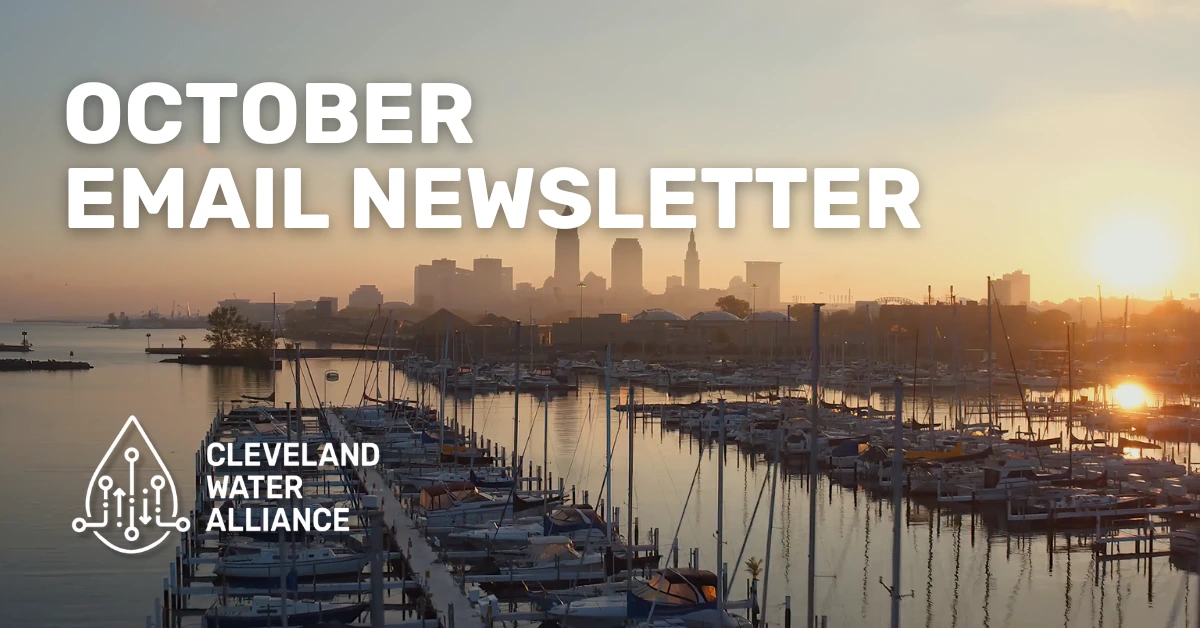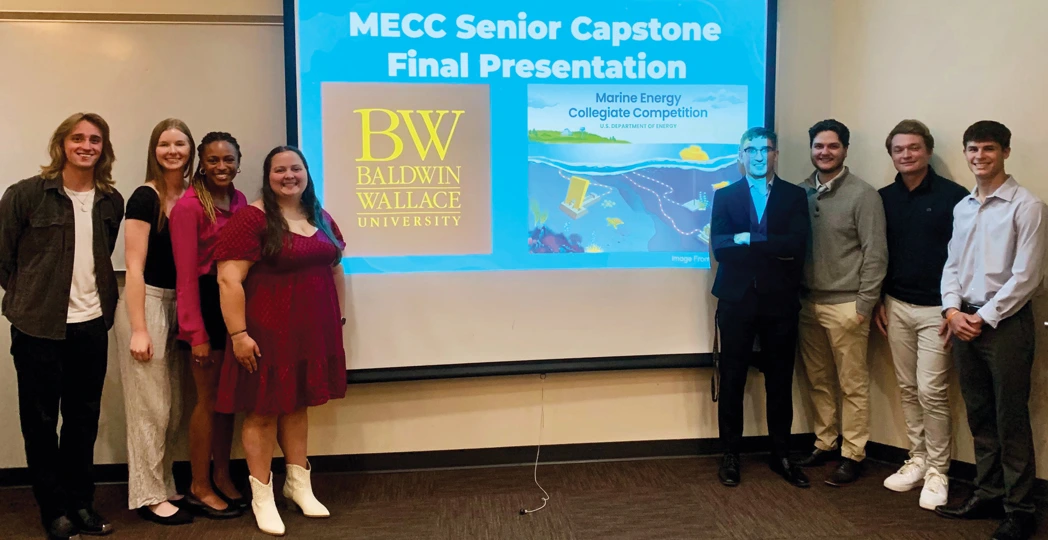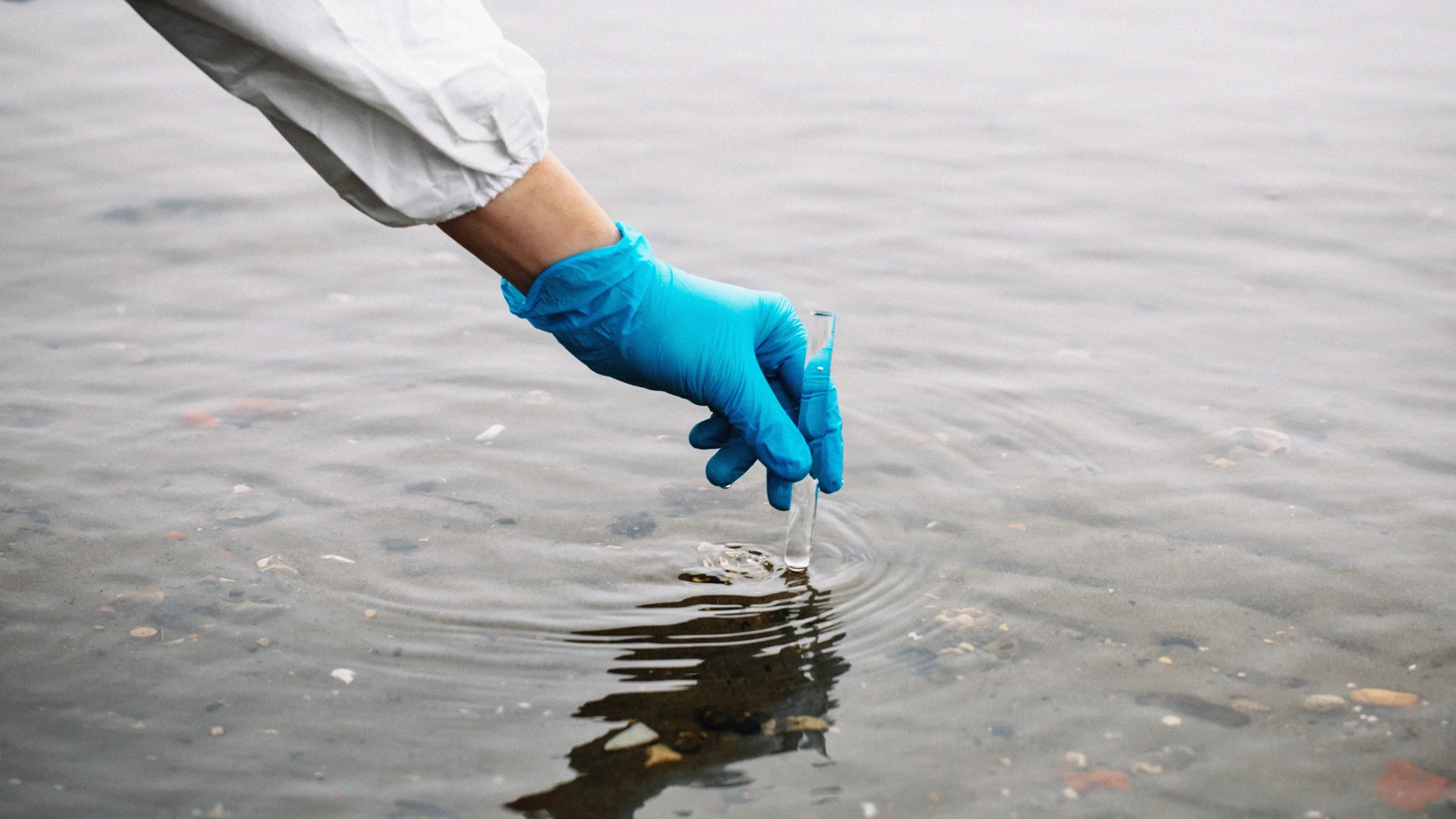Cleveland Water Alliance is excited to share a significant milestone in water innovation. On Thursday, September 14th, from 12:00 to 12:45 pm ET, we'll virtually reveal the winners of our 2023 Open Innovation Challenge. This challenge has drawn widespread attention for addressing a pressing issue: the detection of lead service pipes without disruptive excavation methods.
Listen to this article
Cleveland Water Alliance is excited to share a significant milestone in water innovation. On Thursday, September 14th, 2023, we revealed the winners of our 2023 Open Innovation Challenge. This challenge has drawn widespread attention for addressing a pressing issue: the detection of lead service pipes without disruptive excavation methods.
Thursday, Sept 14, 2023
WATCH HERE
CWA takes pride in spearheading this initiative, hosting an event recognized for its contributions to the field. The Open Innovation Challenge sought inventive solutions that go beyond traditional digging methods.
The rewards are substantial, including a distribution of $75,000 in grants awarded, along with additional perks for the winners. The urgency arises from the U.S. Environmental Protection Agency's (EPA) directive for water utilities nationwide to compile a comprehensive materials inventory of their water service lines by 2024.
The challenge we've undertaken is formidable: finding a way to identify lead service lines without the need for disruptive excavation.
At CWA, we're leading the charge in this endeavor. Our objective is to pinpoint a technology capable of detecting service line materials, such as lead, copper, and galvanized steel, with an accuracy rate exceeding 90%, all while avoiding excavation. View CWA's Open Innovation Request for Technology here.
Our 2023 Open Innovation Challenge extends beyond financial incentives. It provides a global platform for innovators, granting access to grant funding and potential buyers. Participants gain exclusive access to testbeds, enabling them to validate market-driven innovations in partnership with industry leaders.
Established in 2014, Cleveland Water Alliance is a recognized authority in nurturing innovation for the water sector. Our strength lies in a robust testbed infrastructure and distinguished industry expertise, all dedicated to advancing market-driven innovation and sustainable solutions for water-related challenges. Our commitment is underscored by an investment exceeding $500,000 in early-stage innovations.
2023 Open Innovation Challenge Takeaways
Cleveland Water Alliance is seeking innovative solutions to detect underground lead, copper, or galvanized steel pipes.
The CWA's 2023 Open Innovation Challenge aims to find solutions that can detect service lines or pipes made from lead, copper, or galvanized steel, which are buried underground between commercial and residential properties and the water main. The challenge was open to innovators with early stage concepts and does not require a complete solution or prototype. Ebie Holst from the Cleveland Water Alliance emphasized the importance of the challenge, stating it aims to provide insights on areas where solutions are needed.
"Every solution begins with great ideas," said Holst. She further explained that the focus of the challenge is to develop innovative solutions that can help detect service lines or pipes carrying drinking water from distribution systems to homes and businesses. The challenge offers grant dollars to aid the evolution of the idea into a solution and potential future prize money, as well as media exposure for promising innovations.
Brenda Culler of Cleveland Water, further highlighted the need for a solution that can physically detect the water service line pipe material without breaking ground and without the use of broad data inputs. "We are hoping that your ingenuity can help develop a technology that can physically detect the water service line pipe material without breaking ground, and without the use of broad data inputs, such as AI prediction methods," Culler said.
The detection of lead, galvanized steel, or copper pipes could represent a significant market opportunity.
Detecting these specific materials could potentially save public water systems significant costs, making it a lucrative market opportunity for innovators. Currently, it is estimated to cost about $1,500 per site to dig and identify the material of the service line. Brenda Culler stressed the importance of this, stating that a positive or negative indicator of the presence of lead would save public water systems millions of dollars.
"Every public water system is different," said Culler. She explained that the size of the public water system determines the number of service lines in that system. A technology that can accurately and efficiently detect the presence of lead, galvanized steel, or copper could be a game-changer for these water systems.
The challenge is hoping to attract innovations that can detect the material of the service line with 90% accuracy, without soil excavation. It's an ambitious goal, but if achieved, it would save public water systems significant amounts of money, while also providing a huge revenue-generating opportunity for the successful innovator.
The technology needs to be portable, self-contained and provide real-time data.
The innovation should ideally be portable and self-contained, designed for use by field staff or contractors, and capable of providing real-time data. It should be able to differentiate between lead, galvanized steel, and copper service lines without the need for recalibration between different sites or broad data inputs such as historical records.
"The innovation should be without a need to calibrate it between two homes or two sites as you're moving down the street," Culler highlighted. She further emphasized the need for a self-contained power source and real-time indication of where lead, galvanized steel, or copper is located.
Brenda Culler also noted that the successful innovation would ideally have a feature for uploading data in real-time to a map, a requirement of the federal law. This would ensure that the technology not only meets the needs of the challenge but also adheres to regulatory requirements.
JUDGES PANEL
Our panel of judges were instrumental in making this challenge possible.
Judges participated from the following organizations:
- Cleveland Water
- City of Sandusky, Ohio
- Water Works of Cincinnatti, Ohio
- City of Akron, Ohio
- AQUA
OPEN INNOVATION CHALLENGE 2023 WINNERS
FIRST PLACE
Global Quality Corporation
Using Electromagnetic, Acoustics, and AI Methods
Awarded $40,000 in development grants, plus auxiliary services
"This is a proposal out of the Innovation component of our company. We have experience in water domain going back to 1993, so that knowledge coupled with the innovation ideas in IoT and telecommunications and AI including some of the other Innovation products. This is a nice fit within that to explore this to technologies. I'll be leading the electromagnetics part and Steve will be leading the acoustics part and perhaps we'll use a fusion of both to possibly improve the accuracy. I think it's a great opportunity to revisit the physics and leverage the physics both in the electromagnetic spectrum and the acoustic spectrum with the latest advances in technologies. The testbed is a fantastic opportunity." -Sudhir Kshirsagar
SECOND PLACE
Solinas Technologies
Using Pipe Excitation with Sensors
Awarded $25,000 in development grants, plus auxiliary services
"Solinas is an early stage technology company form to develop and commercialize a non-invasive methodology to rapidly identify Water Service Lines. We use acoustic engineering principles and advanced signal processing to differentiate between buried material types. The premise of our patent pending approach is that copper and Lead service lines and galvanized have drastically different mechanical properties and physical geometries. Their different densities, elasticity, diameter, and thickness contribute to the pipe's vastly different natural frequencies. If we can excite these pipes at their natural frequencies and successfully identify their unique acoustic signatures then it's possible to easily identify lead copper galvanized or even mixed pipe systems without interruption of the water supply or access to the home.
"We are very appreciative of the support offered by the Cleveland Water Alliance and look forward to working alongside with the Alliance in the waterline research facility to further our understanding of acoustic behaviors in different soil types and geographies.
"Solinas' vision is that our device would provide the final material type confirmation before a shovel is put in the ground." -Solinas Technologies
THIRD PLACE
Utility Technologies, LLC
Using Borescope, Magnetics, and Content testing technology in the solution
Awarded $10,000 in development grants, plus auxiliary services
"Since we can't go in any other way, the only way to go in is with a curb stop. I want to use multiple ways to actually detect and rule out different types of pipe. A borescope is the the best way because if you can see the pipe, a lot of times you can identify what it is visually, but there are going to be times when you can't see it visually so we this borescope will be part part of a tool that can go into the curb stop. We will also use other ways to rule out what's plastic, what's galvanized, what's lead, what may be copper, and to be able to determine from that. Also there's going to be times where the curb stop may be covered with dirt, so we want to be able to cover times where that may need to be cleaned out at the same time. The kind of tool that we're looking to provide something that could be carried by an individual from place to place, either on a wagon or a trailer or something that can be taken mobile." -Mark Beatty, Utility Technologies, LLC
We invite you to join us for this milestone event and be part of the future of water innovation with CWA. Witness our collective journey as we reshape the water industry. Stay informed about our ongoing efforts in the realm of water innovation.


.svg)










